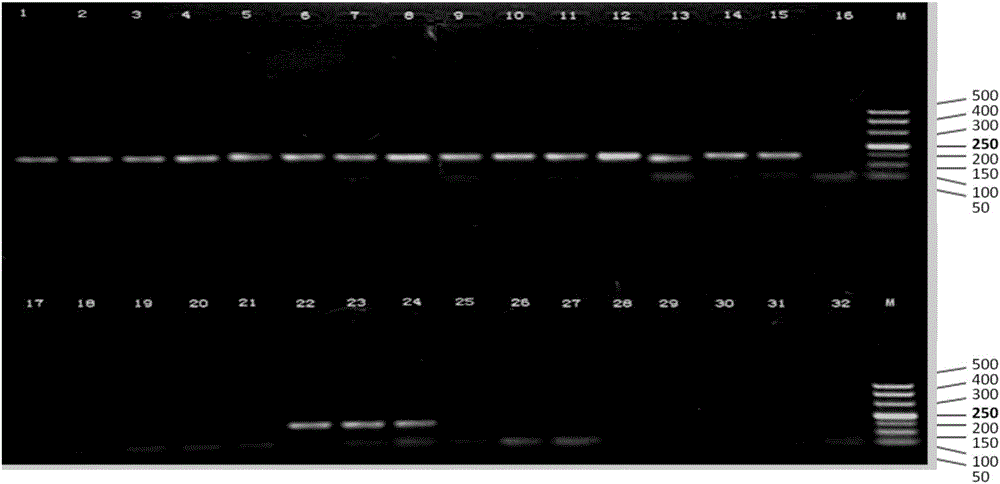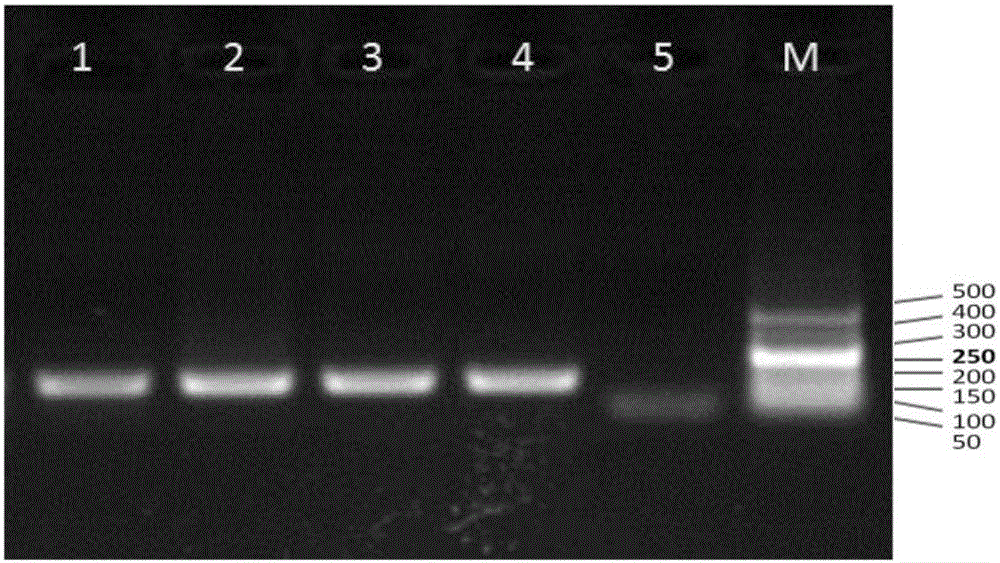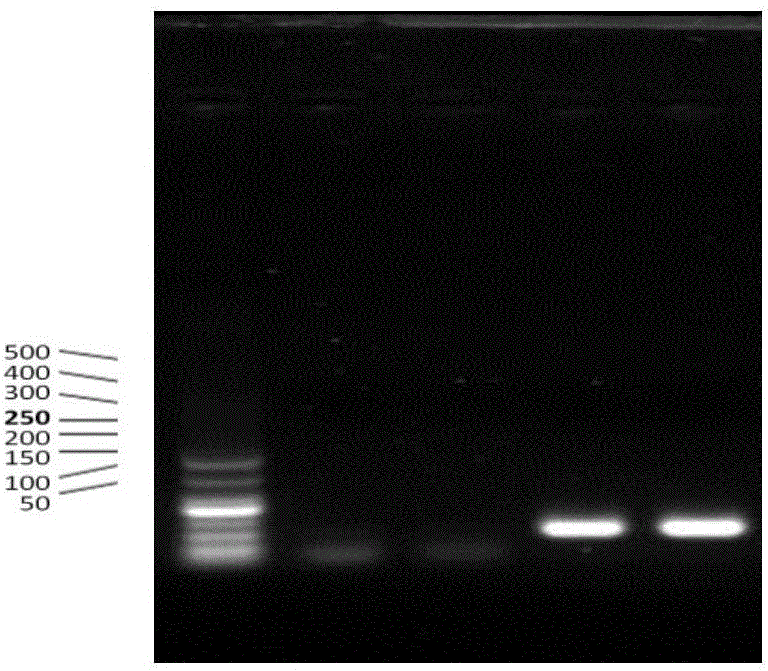Specific primers for detecting endogenousness of metarrhizium anisopliae in plant roots
A specific, plant root technology, applied in the field of specific primers for detecting the endophyte of Metarhizium anisopliae in plant roots, can solve the problems of unsuitable plants and cumbersome detection process, etc.
- Summary
- Abstract
- Description
- Claims
- Application Information
AI Technical Summary
Problems solved by technology
Method used
Image
Examples
Embodiment 1
[0013] Embodiment 1 distinguishes Metarhizium anisopliae from other fungi with the PCR detection of specific primer F1 / R1
[0014] There are a total of 30 experimental strains, including 12 Metarhizium anisopliae strains from different geographical locations and host sources, 3 imported Metarhizium anisopliae strains, and 5 other known fungal strains. 3 strains were identified as Metarhizium anisopliae and 7 strains were identified as other types of fungi (Table 1). Each strain was inoculated and cultured separately, the mycelia were collected, and DNA was extracted according to the instructions of the Fungi DNA Extraction Kit. Perform PCR amplification with primers F1 / R1, and the PCR conditions are: the total volume of the reaction system is 50 μL, containing 5 μL of 10×Ex Taq Buffer, 0.25 μL of 5U / μL Ex Taq, 4 μL of 2.5 mmol / L dNTPMixture, and 10 μmol / L of F1 and R1 1 μL each, 1 μL DNA template, 37.75 μL ultrapure water. The reaction program is: 94°C for 3min→94°C for 15se...
Embodiment 2
[0018] Example 2 Using F1 / R1 Primer PCR to Detect the Endophyte of Metarhizium anisopliae in Peanut Roots
[0019]Set up an experiment in which two strains of Metarhizium anisopliae inoculate peanuts. On the PDA medium, Metarhizium anisopliae strains MBJQH2-2 and Ma9 strains were respectively inoculated, and cultured at 25°C for 15 days to obtain conidia powder. Prepare the spore suspension and adjust the concentration to 1×10 7 Spores / ml. When sowing peanuts, pour 100ml of spore liquid in the seed hole. The non-inoculated control was taken as water pouring. The peanuts were planted under routine management under consistent conditions, and the peanut roots were collected on the 75th and 90th days after sowing for detection. The method steps are as follows:
[0020] 1) Wash the peanut roots, blot the surface moisture, and store them at -20°C for later use. 2) DNA extraction. 3) PCR detection. ①Synthesize primer F1 5'-GGGGTAGTCAGTATTCTGGCGGGC and primer R1 5'-GGGGTTCCACG...
Embodiment 3
[0022] Embodiment 3 detects the endogenous property of metarhizium anisopliae in corn root with F1 / R1 primer PCR
[0023] Set up an experiment in which the gpd-ben-marked Metarhizium anisopliae strain M2-2-44044 and the original strain MBJQH2-2 were inoculated in maize. On the PDA medium, Metarhizium anisopliae strains M2-2-44044 and MBJQH2-2 were respectively inoculated and cultured at 25°C for 15 days to obtain conidia powder. Prepare the spore suspension and adjust the concentration to 1×10 7 Spores / ml. On the 4th day after corn sowing, 100ml of spore liquid was poured around the base of the seedlings. The non-inoculated control was taken as water pouring. The plants were planted under routine management under the same conditions, and the corn roots were collected on the 28th day after the fungus application.
[0024] The steps of the method are as follows: 1) Wash the corn root, blot the surface moisture, and store it at -20°C for later use. 2) DNA extraction. 3) PCR...
PUM
 Login to View More
Login to View More Abstract
Description
Claims
Application Information
 Login to View More
Login to View More - R&D
- Intellectual Property
- Life Sciences
- Materials
- Tech Scout
- Unparalleled Data Quality
- Higher Quality Content
- 60% Fewer Hallucinations
Browse by: Latest US Patents, China's latest patents, Technical Efficacy Thesaurus, Application Domain, Technology Topic, Popular Technical Reports.
© 2025 PatSnap. All rights reserved.Legal|Privacy policy|Modern Slavery Act Transparency Statement|Sitemap|About US| Contact US: help@patsnap.com



